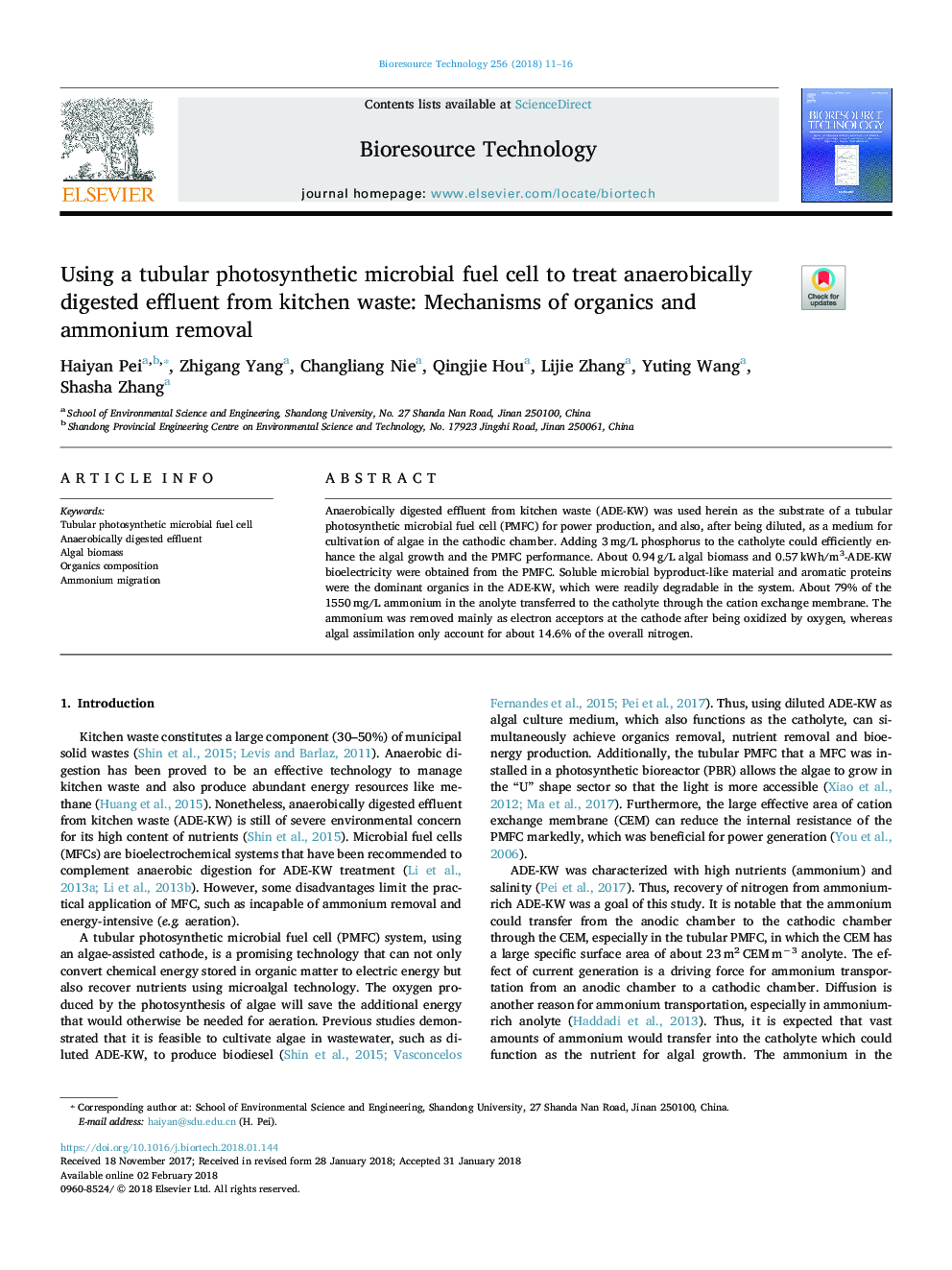| Article ID | Journal | Published Year | Pages | File Type |
|---|---|---|---|---|
| 7067841 | Bioresource Technology | 2018 | 6 Pages |
Abstract
Anaerobically digested effluent from kitchen waste (ADE-KW) was used herein as the substrate of a tubular photosynthetic microbial fuel cell (PMFC) for power production, and also, after being diluted, as a medium for cultivation of algae in the cathodic chamber. Adding 3â¯mg/L phosphorus to the catholyte could efficiently enhance the algal growth and the PMFC performance. About 0.94â¯g/L algal biomass and 0.57â¯kWh/m3-ADE-KW bioelectricity were obtained from the PMFC. Soluble microbial byproduct-like material and aromatic proteins were the dominant organics in the ADE-KW, which were readily degradable in the system. About 79% of the 1550â¯mg/L ammonium in the anolyte transferred to the catholyte through the cation exchange membrane. The ammonium was removed mainly as electron acceptors at the cathode after being oxidized by oxygen, whereas algal assimilation only account for about 14.6% of the overall nitrogen.
Related Topics
Physical Sciences and Engineering
Chemical Engineering
Process Chemistry and Technology
Authors
Haiyan Pei, Zhigang Yang, Changliang Nie, Qingjie Hou, Lijie Zhang, Yuting Wang, Shasha Zhang,
